Menus
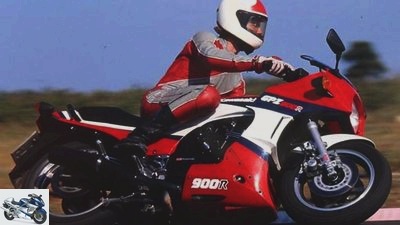
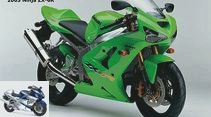
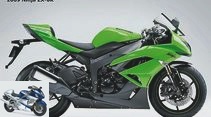
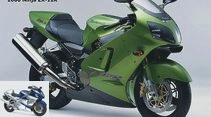
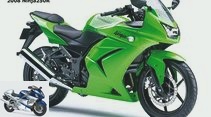
16 photos
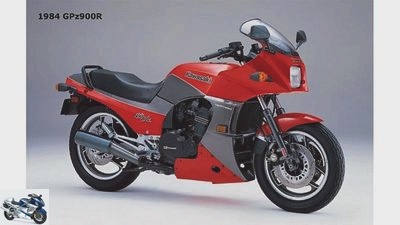
Kawasaki
1/16
1984: Kawasaki GPz900R Ninja
The evolution of the Kawaski from 25 years ago to the present day.
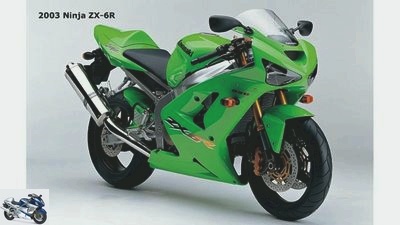
Kawasaki
2/16
2003: Kawasaki Ninja ZX-6R
The evolution of the Kawaski from 25 years ago to the present day.
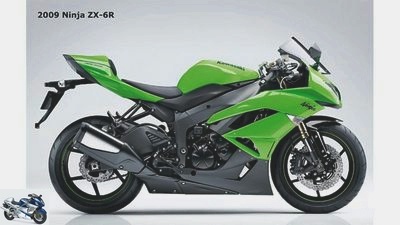
Kawasaki
3/16
2009: Kawasaki Ninja ZX-6R
The evolution of the Kawaski from 25 years ago to the present day.
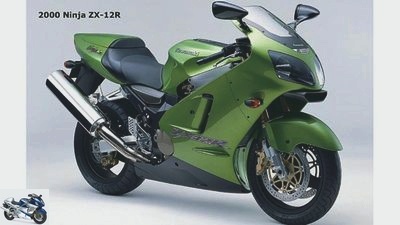
Kawasaki
4/16
2000: Kawasaki Ninja ZX-12R
The evolution of the Kawaski from 25 years ago to the present day.
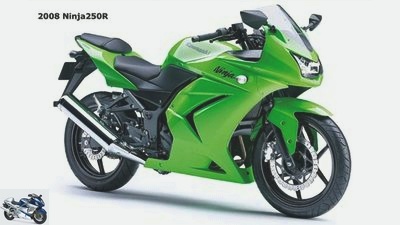
Kawasaki
5/16
2008 Kawasaki Ninja 250R
The evolution of the Kawaski from 25 years ago to the present day.
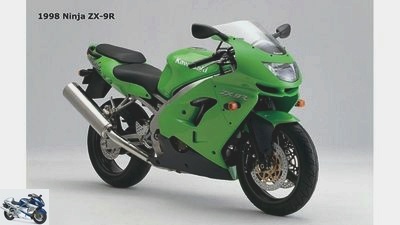
Kawasaki
6/16
1998: Kawasaki Ninja ZX-9R
The evolution of the Kawaski from 25 years ago to the present day.
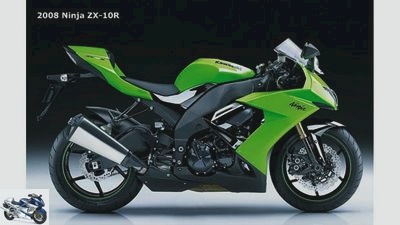
Kawasaki
7/16
2008 Kawasaki Ninja ZX-10R
The evolution of the Kawaski from 25 years ago to the present day.
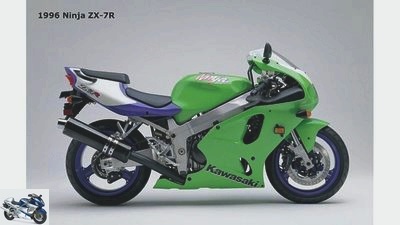
Kawasaki
8/16
1996: Kawasaki Ninja ZX-7R
The evolution of the Kawaski from 25 years ago to the present day.
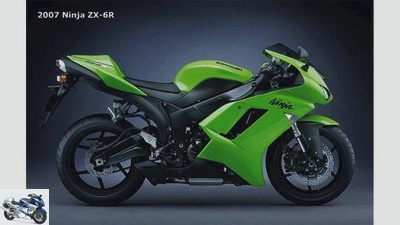
Kawasaki
9/16
2007 Kawasaki Ninja ZX-6R
The evolution of the Kawaski from 25 years ago to the present day.
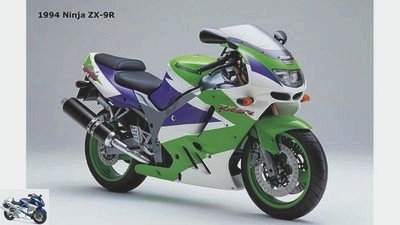
Kawasaki
10/16
1994 Kawasaki Ninja ZX-9R
The evolution of the Kawaski from 25 years ago to the present day.
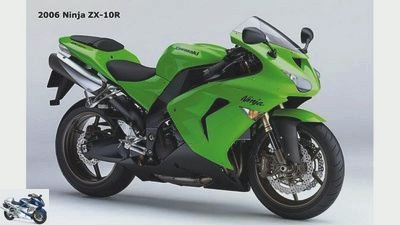
Kawasaki
11/16
2006: Kawasaki Ninja ZX-10R
The evolution of the Kawaski from 25 years ago to the present day.

Kawasaki
12/16
1989: Kawasaki Ninja ZXR750
The evolution of the Kawaski from 25 years ago to the present day.
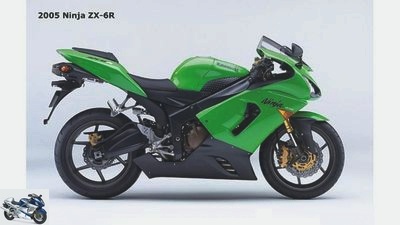
Kawasaki
13/16
2005: Kawasaki Ninja ZX-6R
The evolution of the Kawaski from 25 years ago to the present day.

Kawasaki
14/16
1989: Kawasaki GPz600R Ninja
The evolution of the Kawaski from 25 years ago to the present day.
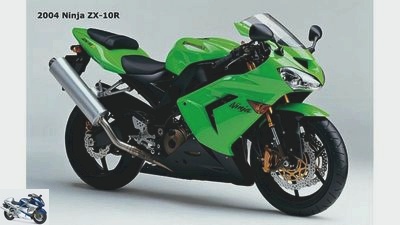
Kawasaki
15/16
2004: Kawasaki Ninja ZX-10R
The evolution of the Kawaski from 25 years ago to the present day.
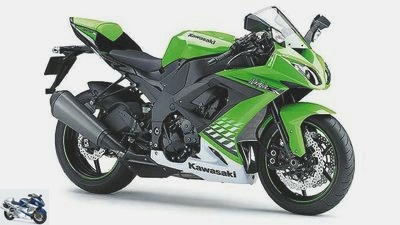
Kawasaki
16/16
2010: Kawasaki Ninja ZX-10R
Report: 25 years of ninja
Anniversary: Kawasaki Ninja
Content of
From the GPZ 900 R to the current ZX-6R, a lot has happened in Kawasaki’s sports motorcycle range. Common to all models is the epithet "Ninja" – which has become a real battle cry for fans in 25 years.
R.Report: 25 years of ninja part 2
In the legends of Japanese history, a ninja is a fighter in secret, a warrior of the shadows, a partisan. He had to rely on his speed. And of course on his strength. So did the ninja from Kawasaki. Like no other motorcycle, it embodies power and speed in the biker scene. The ninjas have been captivating the sports driving scene since the first ninja model ever, the GPZ 900 R, which saw the street lights of the world in 1984. With a top speed of over 240 kilometers per hour and an acceleration from zero to 200 km / h in less than thirteen seconds, the 115 hp GPZ clearly surpasses the measured values of the big bike competitors at the time, the Suzuki GSX 1100 EF, Honda VF 1000 F and Yamaha FJ 1100. And that despite their displacement deficit. The technical solutions of the 900 ninja also delight the fans. A fork with anti-dive system, water cooling and four-valve technology are among the highlights of the original ninja. Inspired by the success of the GPZ 900 R, Kawasaki launched the GPZ 600 R a year later. Like its big sister, the little Ninja also sets the tone with a top speed of 216 km / h and 75 hp rated power, even if only 67 of the promised horses ultimately find their way to the test bench.
archive
The vacuum cleaner hoses of the first ZXR 750 gave the PS testers strange ideas.
1989 Kawasaki presented the first thoroughbred superbike: the ZXR 750, type designation "H1". Two of the numerous innovations that have made their way into the Kawasaki model range with the 750 series are still there today: bright green paintwork and the rear axle cotter pin. The Japanese came from other solutions – from this point on they also liked to use "the green" referred to – again over the years. The distinctive but pointless vacuum cleaner hoses for "Dynamic pressure ventilation on the top of the engine" for example, in 1993, the equally striking first Ram-Air system worldwide gave way. Between exclusive racers like the Honda’s RC30 and Yamaha’s FZR 750 R, both sinfully expensive, the H1 almost looks like a low-budget racer with a price of 15,500 marks at the time. By today’s standards, 234 kilograms and 107 horsepower open won’t knock anyone off their feet, but 20 years ago these values were still considered pure sport. In addition to the performance of the Kawa engine, the impeccable aiming accuracy and driving stability of the H1 are particularly impressive.
Just one year later, in 1990, the Greens launched the H2, a second ZXR generation that was freed from obesity and teething troubles. From a sporting point of view, the ZXR 750 deserves a lot "L." Respect that was in stores from 1993 to 1995. Scott Russell became world champion in 1993, Jochen Schmid secured the German Pro Superbike title in 1995, supported by tuner Kurt Stuckle. Not a professional sports device, but a joker: the ZXR 400, which appeared in 1991. 65 hp at 186 kilograms. The green lethal injection is particularly impressive on the racetrack, but only until the Suzuki and Aprilia with their powerful 250cc two-stroke burners RGV and RS rob their raison d’etre.
archive
Kawasaki Ninja ZX-9R, built in 1994.
The first ZX-9R also took a beating in 1994. Despite a peak performance of 139 hp, it fell short in the hp comparison test. While the engine on which the ZXR 750 is based, the frame comes from the heavy ZZR-1100. Result: 243 kilograms empty weight. The shock absorber in particular suffers from this and quickly reaches the limit of its possibilities. Further points of criticism: a lot of play in the drive train, difficult-to-measure use of power. It speaks for the ZX-9R that it finds a large fan base despite these shortcomings. The followers are happy about the moderate price and the unique concept. Too soft for an athlete, too sporty for a tourer, all ZX-9R years occupy a niche that many bikers tend to enjoy. In response to Honda’s CBR 600 F, Kawasaki presented the first ZX-6R in 1995. Visually, the little one is very similar to its big sister with a displacement of 900 cm³. Fortunately, that doesn’t apply to weight. The 206 kg light 600, 105 HP strong open, shines with a powerful engine, great handling, moderate seating position and fills the same niche as the ZX-9R: too soft for the racetrack, great on the country road. That is telling, because slowly the Ninja series, which heralded an era of extreme sportiness and uncompromising attitude with the radical GPZ 900 R 1984, is increasingly losing its bite and the image of the nasty burner.
Report: 25 years of ninja part 2
archive
300 km / h, in seven seconds to 200 km / h – the values of the ZX-12 R are still convincing today.
Uncompromising announced, increasingly in bite and the image of the nasty burner.
The last 750 ninja, the ZX-7R, started a clear counter-trend. In the first horsepower comparison test, it won the Superbike crown and put the competition from Suzuki, Ducati and Yamaha on the spot. Chassis, engine, brakes – HP awards full points everywhere. The torque is particularly impressive. Only when it comes to weight is the sevens weak: 234 kilos were too much for a super athlete even 13 years ago. If you look at the development of the GSX-R 750, which is still considered to be one of the best and most drivable sports motorcycles ever, it is a shame that Kawasaki let the 750 era die with the ZX-7R. Slimmed down a little and with ten horsepower more, the green one would still be great fun today. In 1998 the new editions of the ZX-6R and ZX-9R follow. The big ninja in particular provides a positive surprise. The weight of the Neuner sinks by 21 to 212 kilograms – a development that would also have looked good on the ZX-7R. The engine power increases to U-Kat-adjusted 143 HP. With this, the Nine finally seems to find a firm footing in the superbike scene – if it weren’t for Yamaha’s YZF-R1. The 150 hp 1000cc superbike also hit the market in 1998 and steals the show from the ZX-9R. The ZX-6R, on the other hand, takes advantage of the battle at the top of its performance and hisses cheekily past its big sister in second place in the horsepower comparison test in 1998 in Anneau du Rhin. What happened? The chassis and engine of the big Kawa respond poorly, while the small one, apart from the significantly weaker engine power, doesn’t allow itself to make any mistakes. Then it gets bold: in 1999 Suzuki invented the speed bikes with the first 300 km / h motorcycle, the Hayabusa. In 2000, Kawasaki followed suit with the 178 hp ZX-12R that was also capable of over 300 km / h. An extreme bike. Seven seconds from zero to 200 km / h. Unfortunately, the 250-kilo ninja steamer is bad around the corner and also hard on the gas. The 12er therefore lands behind the fast Hayabusa in horsepower tests.
The third generation of the ZX-9R also appeared in 2000. Again, the model struggles with poor response behavior and also shows fork flutter that even the blunt series brake pads cannot hide. The brakes of the Ninja models in particular were always beyond reproach. The little ninja, also completely overhauled for 2000, does her job better and secures the PS Supersport crown. Apart from the somewhat underdamped standard strut, it does not have any weaknesses. Handling, engine, brakes – everything at its finest.
archive
Kawasaki Ninja ZX-6 R, built in 2003.
In 2003 the sportiest ZX-6R ever followed – ironically with an engine that does not comply with the super sports regulations. The bizarre conditions began as early as 2002, when Kawasaki equipped the ZX-6R with a 636 cm³ engine. With this, the Greens gamble away their image "real" 600 – just at a time when Andrew Pitt is Supersport World Champion on the 2001 ZX-6R. For racers there is an RR version with 599 cm³ – unfortunately strictly limited and a lot more expensive than the larger-capacity street counterpart. PS is delighted with the mix of road-friendly 636 engine and sporty chassis: the ZX-6R wins one test after the other. In the following year, the sports image of the ninja models was finally rehabilitated: the first ZX-10R came onto the market. 174 hp at 199 kilos – a bomb! She easily won the test in the Superbike group test and won the international crown in 2004 and 2005 "Masterbike" as the best series sports motorcycle in the world. How good it really is becomes apparent four years later: PS is testing the three ZX-10R generations in 2004, 2006 and 2008. The 2004 model scores level with the powerful 2008 model.
The 2005 ZX-6R continues the positive trend. With an underseat exhaust, a nominal 130 HP (there are still 120 on the test bench) and great brakes, it wins the HP Supersport crown again. The following year the new edition of the ZX-10R appears – and defends its title on the racetrack. Five stars in three out of four categories. The rude awakening follows on the highway: last place. While the strong green was converted to standard tires on the racetrack, the series tires give her a lot of trouble and, paired with the engine characteristics, thwart the plan in the country road test.
Unfortunately the next disappointment follows in 2007. The ZX-6R, now again with a real Supersport engine, is eight kilos heavier than the previous model, but nominally five hp less. The upgrade to class-compliant 599 cm³ saves production capacities, but has no chance compared to the competition.
Kawasaki
Kawasaki Ninja ZX-10 R, built in 2010.
The most powerful Kawasaki of all time with 188 hp, the 2008 ZX-10R, does not turn the trend despite its high output. At low speeds, your exhaust and electronics choke off the juice. In the racing trim she pulls forward all the more brutally. In general, ninja models are popular with various tuners who proudly and successfully present their green racers every year at the PS Tuner GP. With the Ninja 250 R, Kawasaki breaks with the previous line of evil attackers. Small, light, cheap, that’s the motto. The handling is great, but you won’t find any performance, equipment or usable initial tires. In 2009 the ZX-6R finally made its next attempt. On the racetrack, she finished third, but won the country road test. The engine is fun, the seating position and handling are okay – a real upward trend. So we hope that the fascinating ninja story will continue with the new models. The ZX-10R could soon be such a striking shadow warrior again. Kawasaki takes a little more time with the new one: in 2011 she may have what it takes to go back into battle as a bloodcurdling ninja with a murderous blade.




16 photos
Images: Report: 25 years of ninja
To home page

Kawasaki
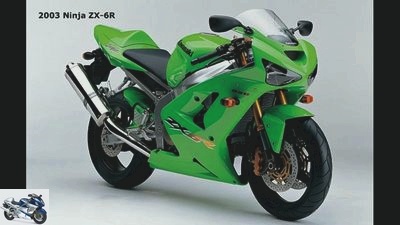
Kawasaki
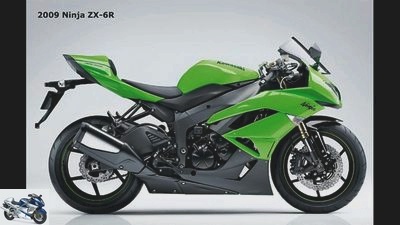
Kawasaki
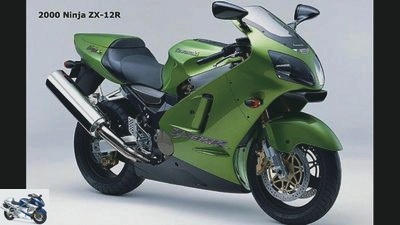
Kawasaki
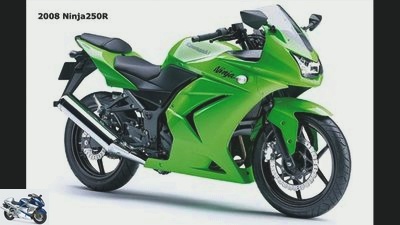
Kawasaki
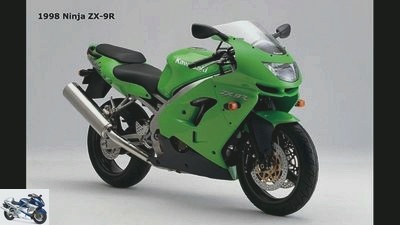
Kawasaki
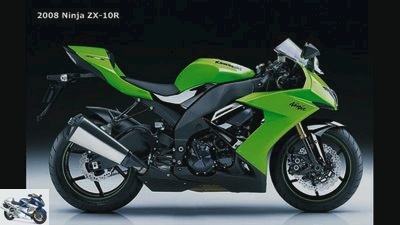
Kawasaki
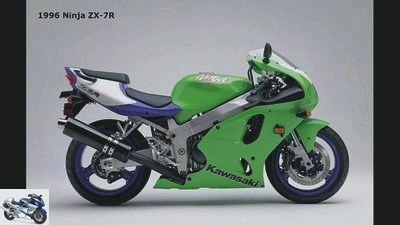
Kawasaki
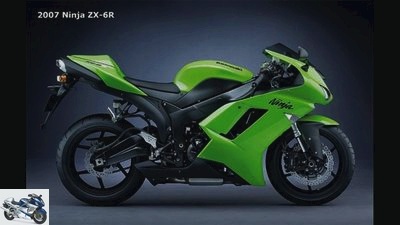
Kawasaki
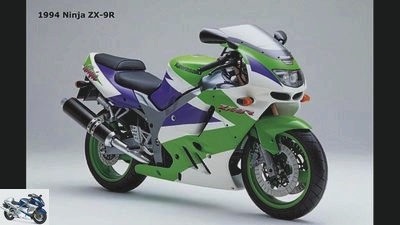
Kawasaki
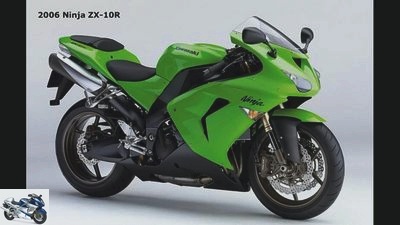
Kawasaki
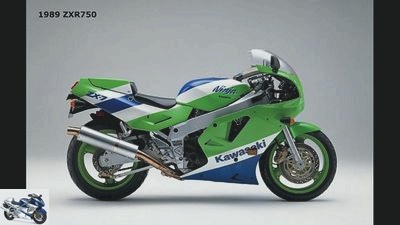
Kawasaki
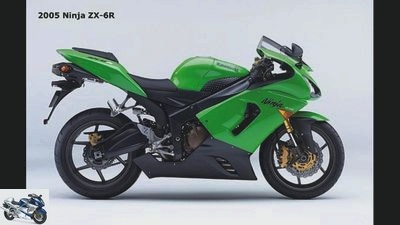
Kawasaki
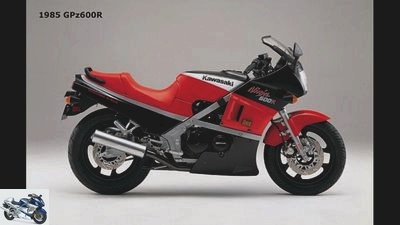
Kawasaki
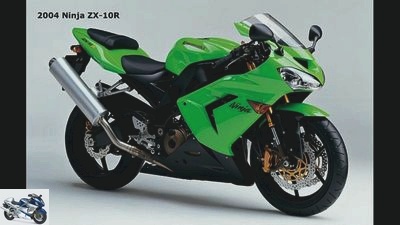
Kawasaki
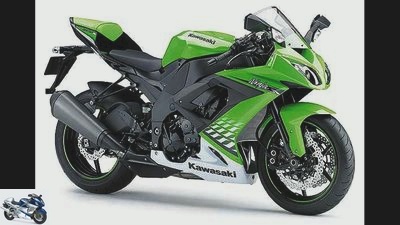
Kawasaki
Related articles
-
Manufacturer 16 images archive 1/16 MOTORRAD celebrated 25 years of ninja in 2009 with an ode to the virtues of the 900s: sheer performance and stability ….
-
Ducati 1299 Panigale S and Kawasaki Ninja H2 in comparison test
31 pictures 1/31 Left in the picture 197 HP and 145 Nm (Ducati 1299 Panigale S), on the right there are 200 HP and 133 Nm (Kawasaki Ninja H2) ….
-
Kawasaki Ninja ZX-10R in the PS driving report
Kawasaki 34 pictures Kawasaki 1/34 Kawasaki ZX-10R (2016). Kawasaki 2/34 Kawasaki ZX-10R (2016). Kawasaki 3/34 Kawasaki ZX-10R (2016). Kawasaki 4/34 …
-
Aprilia Tuono V4 1100 RR, Kawasaki Ninja H2 and BMW S 1000 XR in the comparison test
Arturo Rivas Gonzalez 31 pictures Arturo Rivas Gonzalez 1/31 Aprilia Tuono V4 1100 RR, Kawasaki Ninja H2 and BMW S 1000 XR. Arturo Rivas Gonzalez 2/31 And …
-
Driving report new Kawasaki ZX-9R
Driving report new Kawasaki ZX-9R Flying change Not even two years on the market, Kawasaki is pushing an all-round …
-
Kawasaki Ninja ZX-10R WSBK Champion Edition (2018)
Kawasaki Ninja ZX-10R WSBK-Champion-Edition Only 25 copies for Germany Jonathan Rea won the World Superbike Championship on his Ninja ZX-10R …
-
Kawasaki ZX-10RR (2017) in the driving report
Kawasaki 16 pictures Kawasaki 1/16 Kawasaki ZX-10RR. Kawasaki 2/16 Kawasaki ZX-10RR. Kawasaki 3/16 Kawasaki ZX-10RR. Kawasaki 4/16 Kawasaki ZX-10RR ….
-
Final: 25 years of the Kawasaki GPZ 900 R
Artistic finals: 25 years of the Kawasaki GPZ 900 R Fire under your bum It opened a new era: strong, fast, stable. The GPZ 900 R, Kawasaki’s first …
-
Driving report Kawasaki Ninja 250 R
Kawasaki 8th photos Kawasaki 1/8 Kawasaki 2/8 Kawasaki 3/8 Kawasaki 4/8 Kawasaki 5/8 Kawasaki 6/8 Kawasaki 7/8 Kawasaki 8/8 Driving report Kawasaki Ninja…
-
Recall Kawasaki Ninja ZX-10R and Kawasaki Ninja ZX-10RR model years 2016 – 2018)
Kawasaki 34 photos Kawasaki 1/34 Kawasaki ZX-10R (2016). Kawasaki 2/34 Kawasaki ZX-10R (2016). Kawasaki 3/34 Kawasaki ZX-10R (2016). Kawasaki 4/34…